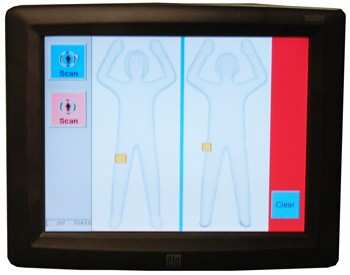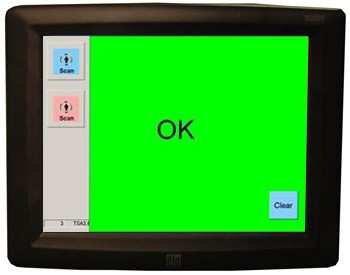Comment Period Open Until June 24
The TSA is proposing to revise its civil aviation security regulations to clarify that it may use advanced imaging technology (AIT) to screen individuals at security screening checkpoints. This proposed rule is issued to comply with a decision of the U.S. Court of Appeals for the District of Columbia Circuit, which ordered TSA to engage in notice-and-comment rulemaking on the use of AIT for screening. The Court decided that TSA should provide notice and invite comments on the use of AIT technology for primary screening.

According to the NPRM, AIT currently provides the best available opportunity to detect non-metallic anomalies [5] concealed under clothing without touching the passenger and is an essential component of TSA's security layers. Congress has authorized TSA to procure and deploy AIT for use at security checkpoints.
TSA's regulations require that “[i]ndividuals may not enter or be present within a secured area, air operations area, security identification display area, or sterile area without complying with the systems, measures, or procedures used to control access to such areas.” In addition, “[i]ndividuals may not enter a sterile area or board an aircraft without submitting to the screening and inspection of their person and accessible property in accordance with the procedures being applied to control access to that area or the aircraft.” Federal law also requires that air carriers refuse to transport a passenger who does not consent to a search of his person or baggage, and authorizes air carriers to refuse to transport a passenger or property the carrier decides is, or might be, inimical to safety.
The specific security procedures, systems, or measures that TSA deploys are included in its Standard Operating Procedures (SOPs). The SOPs instruct the TSOs how to conduct the screening measures currently in use. Terrorists continue to seek ways to thwart aviation security measures and could use information on TSA procedures, such as the instructions on how to operate AIT equipment and the AIT equipment specifications, to plan and execute attacks. Therefore, the SOPs are SSI and are not made public as such disclosure would prove detrimental to transportation security.

In response to the decision in EPIC v. DHS, TSA is proposing to add the following language to its current regulations at 49 CFR 1540.107, quoted above, to specifically address AIT screening:
(d) The screening and inspection described in (a) may include the use of advanced imaging technology. For purposes of this section, advanced imaging technology is defined as screening technology used to detect concealed anomalies without requiring physical contact with the individual being screened.
The comment period on the NPRM is open until June 24. You may submit comments, identified by the TSA docket number (TSA-2013-0004) to this rulemaking, to the Federal Docket Management System (FDMS), a government-wide, electronic docket management system, using any one of the following methods:
Electronically: You may submit comments through the Federal eRulemaking portal. Follow the online instructions for submitting comments.
Mail, In Person, or Fax: Address, hand-deliver, or fax your written comments to the Docket Management Facility, U.S. Department of Transportation, 1200 New Jersey Avenue SE., West Building Ground Floor, Room W12-140, Washington, DC 20590-0001; fax (202) 493-2251. The Department of Transportation (DOT), which maintains and processes TSA's official regulatory dockets, will scan the submission and post it to FDMS.
 ANN's Daily Aero-Term (12.08.25): Decision Altitude (DA)
ANN's Daily Aero-Term (12.08.25): Decision Altitude (DA) ANN's Daily Aero-Linx (12.08.25)
ANN's Daily Aero-Linx (12.08.25) NTSB Final Report: Piper PA-31T3
NTSB Final Report: Piper PA-31T3 Aero-News: Quote of the Day (12.08.25)
Aero-News: Quote of the Day (12.08.25) Airborne-Flight Training 12.04.25: Ldg Fee Danger, Av Mental Health, PC-7 MKX
Airborne-Flight Training 12.04.25: Ldg Fee Danger, Av Mental Health, PC-7 MKX




